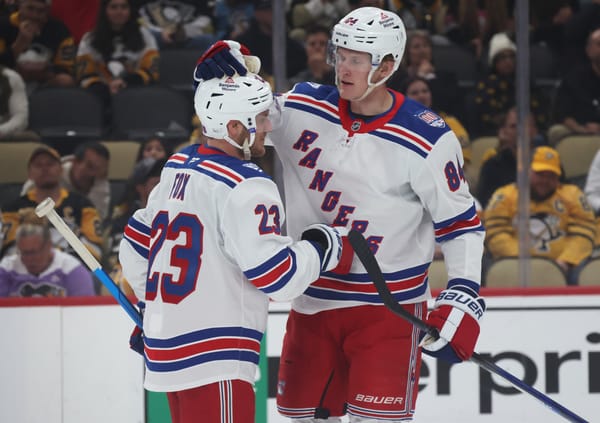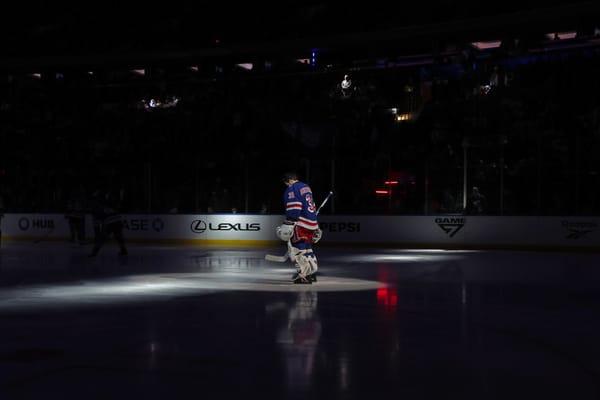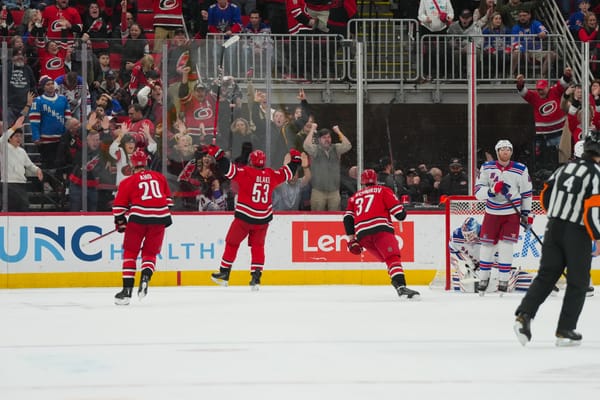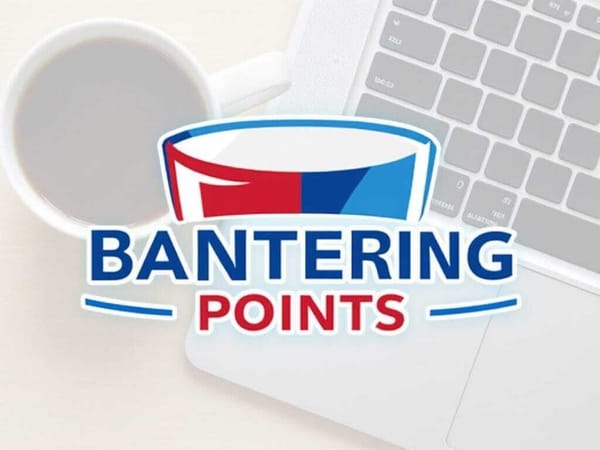The Rangers Aren’t Fighting
Since the 2008-09 season there has been a lot less blood on NHL ice. According to hockeyfights.com the rate of fights per game in the NHL has been in steady decline over the past nine seasons.
Back in 2008-09 season, when the Rangers traded Petr Prucha to the Phoenix Coyotes, there were 0.60 Fights per Game and 41.38% of NHL games had fights. Last season there were 0.28 Fights per Game and 23.41 % of games saw players dropping the gloves.
Despite there being a great deal less fighting than their was a decade ago some teams, like the Anaheim Ducks and the Columbus Blue Jackets, still regularly ice down their knuckles after games. The role of fighting is diminished but it remains a big part of the identity of several clubs.
The New York Rangers are not one of those teams and they haven’t been for quite some time.
In the 2011-12 season the Rangers led the league in fighting majors. They had a roster with several players that were always ready to answer the bell. That season Brandon Prust fought 20 times, Mike Rupp fought 13 times, and Stu Bickel traded punches 12 times.
Head coach John Tortorella encouraged physical, heart-on-your-sleeve hockey and players who stood up for their teammates regularly earned spots in the lineup.
(*=2012-13 data scaled to conform to standard 82 game season)
Now, under Alain Vigneault, the Rangers are one of the least pugilistic teams in the league. But the Rangers were already undergoing a dramatic change in Tortorella’s final season. They went from being the biggest brawlers in the NHL to tied for 22nd in the league in fighting majors. What happened?
That year rough customers Arron Asham, Michael Haley, Rupp, and Bickel played in very few games (Asham led that group with 27 games in that 48 game season). The token tough guys were suddenly not in the lineup as often. Something was changing. The Rangers weren’t fighting.
Since the shortened 2012-13 season the Rangers have finished below the league average in fighting majors every season.
Last season the Rangers ranked 24th in fighting majors. Only six different Rangers fought. Tanner Glass led the team with five fights and Dylan McIlrath was the runner-up with four after leading the Wolf Pack in fighting majors in back-to-back seasons (13 each year).
As things currently stand the Rangers’ bottom-six forward group will consist of two highly-anticipated rookies, Kevin Hayes, Michael Grabner, and... no one really knows what the fourth line will be. The only player on the roster not named McIlrath with a reputation for fisticuffs is Glass. But at this point it appears that his spot on the roster is already gone.
There are a lot of questions about the 2016-17 Rangers, but at least one thing is certain; they won’t be a fighting team.
So, what place does fighting have in the rest of the hockey world?
Fighting may be less frequent in the NHL but it is still alive and well in North American hockey. Unsurprisingly preseason NHL games have a much higher rate of fighting majors. There will never be a shortage of fringe roster players who are willing to punch their way to an NHL contract.
Fighting remains prevalent in the CHL and especially in the OHL. Skaters must wear neck guards and visors in the major juniors, but they are still allowed to drop the gloves. The demand to see teenagers engage in bare-knuckle boxing matches remains high north of the border and in the few American cities that host CHL clubs.
At the professional level the AHL still has a great deal more fighting than the NHL. The three teams that led the NHL in fights last season had a combined 115 scraps. The three teams that led the AHL had 202 fights between them. That’s a lot of band-aids.
Outside of North America fighting in hockey simply isn’t as prevalent. Despite Damir Ryspayev’s recent despicable rampage (which earned him a lifetime ban) the KHL has very few fights. The same is true for the rest of the major European professional leagues.
There are plenty of things that have been missing from the Rangers over the past four years, but fighting isn’t one of them. It’s a relief to see that the Rangers continue to trend in the right direction after the scrap-happy years of the Tortorella era.
Given the haunting but crucial lessons we are learning about the effects of concussions it’s promising to see that fighting in hockey is on the decline. But make no mistake, it remains a part of the game. A part of the game that gets harder and harder to defend and justify with each passing year, each new study, and each tragic headline.
(Data from hockeyfights.com)




